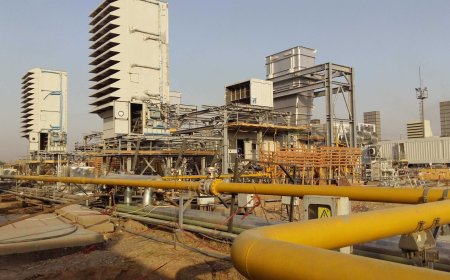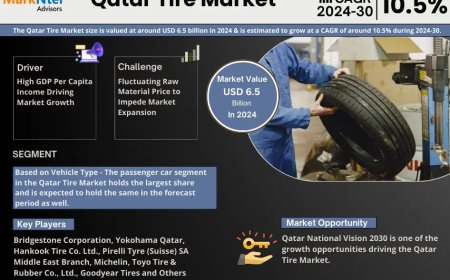UK Power Out? Manual Switches and Generators to the Rescue
Power cuts can throw life off balance. Whether it’s a dark evening at home or a halted production line, reliable electricity matters. In the UK, Manual Transfer Switches and new generators for sale offer practical ways to keep the lights on.

Power cuts can throw life off balance. Whether its a dark evening at home or a halted production line, reliable electricity matters. In the UK, Manual Transfer Switches and new generators for sale offer practical ways to keep the lights on.
What is a Manual Transfer Switch?
A Manual Transfer Switch is a device that lets you choose your power source. It connects a buildings electrical system to either the mains grid or a backup generator. Safety is its core function. It stops dangerous back-feeding that could harm utility workers or fry equipment. Typically, it has three settings: Mains, Off, and Generator.
How It Operates
The process is simple but deliberate. When the mains power fails, you flip the switch to Off. This cuts the building off from the grid. Then, you fire up the generator. Next, you move the switch to Generator mode. When the grid is back, you reverse the steps. Turn off the generator first. Then switch back to Mains.
Technical Details
These switches come in various specs. A 16-Amp ABB 3 Phase N model, for example, handles three-phase power. Its rated for 16 amps, ideal for modest setups like small shops or homes. Single-phase versions exist for simpler needs. Theyre often encased in IP65 steel enclosures. These shield against dust and rain. Theyre built to endure the UKs damp, gusty conditions.
Unique Use Cases
Manual Transfer Switches fit specific scenarios. Picture a remote farm in the Pennines. Grid power there is patchy at best. Farmers use these switches to keep milking machines or barn lights running. Theyre also a hit in small workshops. Owners value the hands-on control. Temporary setups, like music festivals or construction sites, benefit too. The switches pair easily with portable generators. Theyre perfect when instant power isnt critical.
Safety Features
This prevents electrical mishaps. Clear labels show which mode is active. Installation must follow UK regulations. A certified electrician ensures proper wiring. This avoids risks like arcing or overheating. Regular checks keep the switch reliable.
What Are New Generators for Sale in the UK?
New generators are standalone units that generate electricity. They turn fueldiesel, petrol, or gasinto power via mechanical energy. Fresh from manufacturers, they come with warranties and modern tech. They meet the UKs strict safety and emissions rules. These units are designed for reliability, from homes to heavy industry.
Types and Builds
Generators differ by fuel and capacity. Diesel units, like a silent-running DHY6000SE, are efficient and quiet. Theyre great for suburban homes. Petrol models are lighter and budget-friendly. Theyre often portable, suiting outdoor tasks. Gas-powered options are rarer but greener. Power outputs range widely. A small home might need 5 kW. A factory could demand 100 kW or more.
How They Function
A generators heart is its engine, alternator, and control panel. The engine burns fuel to drive a rotor. The alternator converts this motion into electricity through electromagnetic fields. The control panel keeps things stable. It regulates voltage and frequency. Advanced units have better features. Low oil? They shut down automatically. Overloaded? They trip to protect the system.
Advanced Features
New generators pack clever tech. Digital displays show live statsthink voltage or hours run. Some offer remote start via apps or fobs. Noise is a big focus. Silent enclosures keep sound low, around 65 dB for some diesel models. Thats quieter than a busy caf. Fuel efficiency is another perk. Modern engines sip fuel sparingly. This cuts costs over time. Some even support biofuels for a greener footprint.
Niche Applications
New generators serve unique needs across the UK. In hospitals, they keep ventilators humming during blackouts. Data centres rely on them to avoid server crashes. A minute offline can cost thousands. Construction crews use them for cranes or welders. Off-grid homes, like cottages in the Highlands, depend on them entirely. Outdoor eventsthink food festivals or weddingsuse them to power lights and sound systems in remote fields.
Pairing with Manual Transfer Switches
Combining a new generator with a Manual Transfer Switch is practical. The switch ensures safe power delivery. Its a budget-friendly setup compared to automatic systems. Users who dont mind flipping a switch benefit most. Its versatile too. The switch handles the connection seamlessly.
Manual vs. Automatic Systems
Manual Transfer Switches differ from automatic ones. An Automatic Transfer Switch senses a power cut. It switches to the generator instantly. No human effort is needed. This suits critical sites like clinics. Manual switches need user action. Theyre slower but cost less. Both work with new generators. Your choice hinges on urgency and funds.
UK-Specific Considerations
The UKs weather and rules shape these systems. Rain and wind demand tough gear. IP65 enclosures protect switches from the elements. Generators need weatherproofing if stored outside. Fuel storage is another issue. Diesel and petrol need secure, ventilated tanks. Noise bylaws vary by council. Silent generators help comply with limits.
Maintenance Requirements
Both systems need care. Manual Transfer Switches require occasional inspections. Contacts can corrode or stick. Regular testing keeps them functional. Generators need more effort. Change the oil every 100 hours or so. Clean or replace air filters. Check batteries for charge. Annual service plans can handle this. They cover tune-ups and repairs. Good upkeep means longer equipment life.
Cost Breakdown
Manual Transfer Switches are wallet-friendly. A 16 Amp model might cost 500. New generators vary more. A small diesel unit could be 1,600. Industrial ones hit 10,000 or beyond. Installation adds 200500 for a switch. Generator setup costs depend on complexity. Fuel and maintenance are ongoing. Plan for these to avoid surprises.
Environmental Notes
Green concerns matter in the UK. New generators for sale in the UK meet tight emissions rules. Diesel units burn cleaner than older models. Some handle biofuels, cutting carbon output. Manual Transfer Switches are eco-neutral. They use no power themselves. Efficient generators reduce fuel waste. This aligns with the UKs net-zero goals.


































